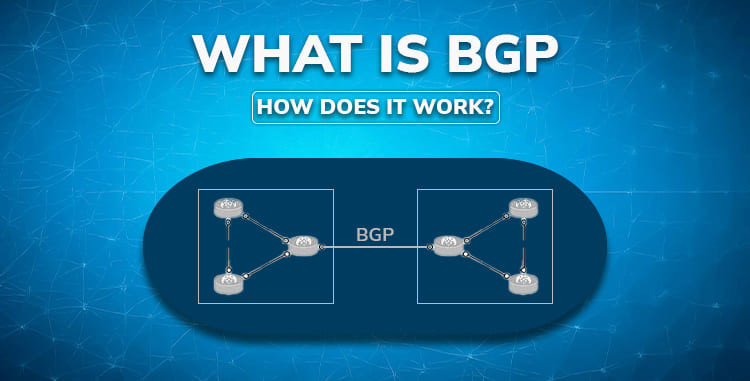views
Top 15 BGP Interview Questions and Answers for Networking Jobs
In the world of IT infrastructure, Border Gateway Protocol (BGP) is a cornerstone of internet and enterprise-level networking. Whether you’re preparing for a network engineer role or aiming to master advanced routing concepts, understanding BGP is essential. Recruiters often focus on BGP interview questions to evaluate a candidate's grasp of real-world routing scenarios, configuration knowledge, and troubleshooting skills.
At UniNets, we train professionals with extensive training in BGP, switching, virtual routing and forwarding (VRF), and other key technologies. In this blog, we're going to discuss the top 15 BGP interview questions and answers and corresponding subjects such as the difference between TCP UDP, and DevOps interview questions and answers related to networking expertise.

1. What is BGP and why is it used?
Answer:
BGP (Border Gateway Protocol) is a path vector routing protocol utilized for exchanging routing information among autonomous systems (AS) on the internet. It is an exterior gateway protocol (EGP) and is capable of dealing with thousands of routes in an efficient manner. BGP is employed for routing among various organizations, ISPs, and enterprise networks.
2. What are the types of BGP?
Answer:
There are two types:
External BGP (eBGP) – among different autonomous systems.
Internal BGP (iBGP) – within the same autonomous system.
3. How does BGP establish a connection?
Answer:
BGP uses TCP Port 179 to establish a reliable connection between peers. This ensures reliable delivery of routing information. Here, understanding the difference between TCP and UDP is vital — BGP requires TCP’s reliability for route advertisement.
4. What is the difference between iBGP and eBGP?
Answer:
iBGP peers do not modify the next-hop attribute and need a full mesh unless route reflectors are employed.
eBGP peers modify the next-hop and usually run between other ASes.
5. What is a BGP AS Path?
Answer:
The AS Path is a BGP attribute that prevents routing loops. It identifies the list of AS numbers that routing information has passed through. The shorter AS paths are given priority.
6. What is BGP Route Reflector?
Answer:
A route reflector mitigates the full-mesh requirement in iBGP by enabling a router to redistribute routes learned via iBGP to other iBGP neighbors. It enhances scalability in bigger networks.
7. What are BGP Communities?
Answer:
BGP Communities are optional attributes that collect routes for administrative purposes. They enable policies to be applied to multiple routes at once.
8. How does BGP prevent loops?
Answer:
BGP utilizes the AS Path attribute to avoid loops. When a router has its own AS number present within the AS path of a received update, it discards the route.
9. What are BGP Timers?
Answer:
Keepalive Timer: Default is 60 seconds.
Hold Timer: Default is 180 seconds.
Timers that indicate how frequently peers send keepalive packets and how long to wait before considering a peer dead.
10. What is the difference between BGP and OSPF?
Answer
BGP is an EGP for inter-AS routing, policy-based, and scalable.
OSPF is an IGP for use within an AS, fast convergence, and link-state-based.
Each has a special use. BGP is generally employed in internet routing, whereas OSPF is employed inside enterprises.
11. What does BGP use to select the best path?
Answer:
BGP employs multiple attributes in the following order:
Weight (Cisco-specific)
Local Preference
Shortest AS Path
Origin Code
MED (Multi-Exit Discriminator)
eBGP over iBGP
Lowest IGP metric to the next hop
Oldest path
Router ID
12. What is BGP Route Aggregation?
Answer:
Route aggregation takes several specific routes and bundles them into one summarized route to minimize the routing table size. This enhances performance and efficiency.
13. Can BGP work with VRF?
Answer:
Yes. Virtual Routing and Forwarding (VRF) enables several instances of BGP to be run on a single router for diverse customers or services. BGP with VRF occurs frequently in MPLS VPN environments.
At UniNets, we have hands-on labs where students set up BGP with VRF in enterprise environments, gaining hands-on knowledge.
14. What are some basic steps for troubleshooting BGP?
Answer:
Check that TCP port 179 is open.
Verify neighbor relationships using show ip bgp summary.
Confirm matching AS numbers and update sources.
Check BGP attributes and path selection.
Knowledge of basic switching is crucial in troubleshooting BGP in enterprise networks, particularly when utilizing Layer 3 switches.
15. What are some BGP or networking-related DevOps interview questions?
Although DevOps engineers don't set up BGP every day, they're usually supposed to know networking basics. Some example DevOps interview questions with answers about BGP or networking are:
Q: How do you isolate services in microservices architecture?
A: Isolate services using virtual routing (such as VRF) or namespaces in Kubernetes.
Q: How would you debug connectivity between services in multi-cloud environments?
A: Start by checking route tables, BGP advertisements (if on VPN or Direct Connect), and firewall rules.
A deep understanding of BGP and associated routing protocols brings huge value to a DevOps skill set — particularly within hybrid or multi-cloud deployments.
Final Thoughts
Mastery of BGP is essential for any networking or IT infrastructure expert. These BGP interview questions, apart from assisting with job interviews, also reinforce your basic knowledge of network scalability, operations, and design.
At UniNets, we provide industry-leading training in BGP, switching, VRF, and actual-world troubleshooting. Our training combines theoretical foundation with practice in the lab, building you for top-paying jobs in cloud infrastructure, network engineering, and DevOps.



Comments
0 comment